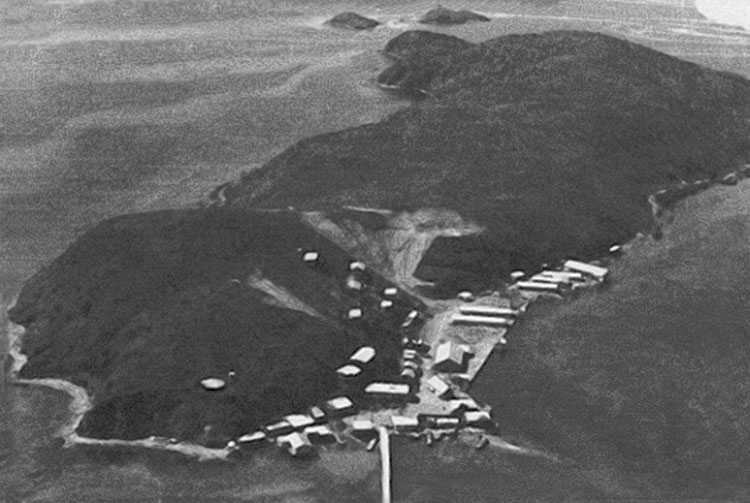GEMO HOSPITAL - PORT MORESBY
by Stu Hawthorne
Gemo (Hanudamava) Island lies on the western side of Moresby Harbour, about 3 km and half an hour launch trip from Port Moresby. From 1937 to 1974 (less WW2 occupation by the military), Gemo Island was the site of a hospital for leprosy and tuberculosis patients. This is its story - as narrated by Stu Hawthorne.

AERIAL PHOTO
 |
Gemo Island was not a well known area for Port Moresby residents. However my mother worked for the Red Cross and one of her tasks was to organise the Junior Red Cross (JRC), a club which mostly young girls joined. Their uniform was a white dress, red cape and white nurse's cap.
One of the JRC's regular field trips was a visit to the hospital on Gemo. Here the girls, under supervision, dispensed reading material, cakes of soap, sweets, tobacco, writing pads and I have no idea why rubber bands, to the patients.
 |
The only access to Gemo was by sea so the girls went over in the government launch. Though I wasn't a member of The Junior Red Cross, since all the stuff to be given away was packed in cardboard boxes on the Port Moresby side, my offer to come along to carry these boxes on and off the boat was usually accepted. In this way I was able to visit the island many times when I was still at primary school. Of course my visits provided me with the out and about launch trips on the harbour which is what I was really interested in.
Sometimes if there were supplies to be carried further I would go with the girls on their rounds. The first time I went was a bit of a shock because some of the patients were badly affected with several having only stumps where their fingers would have been. One old man had no ear and another had one foot almost completely eaten away with the other foot almost as bad. They were housed in old army buildings with walls of unlined corrugated iron and concrete floors but the place was clean and did not seem like hospital. It seemed just like a normal village to me.
Leprosy (Hansen's Disease) was a doubly cruel affliction because it's suffering was compounded in those days at least by the social isolation accompanying its treatment. Though the position of the hospital at the northern end of the island had probably more to do with the geography and shelter from the prevailing south easterlies than anything else, it's location nevertheless captures something of the flavour of the thinking of the time, with the hospital tucked in on the western side, hidden from view, as it were, from all the nice folks over in town. I never understood at the time, given that it was considered safe to let us healthy children mingle with the patients, why they could not go home and be treated there.
What struck me on more than one occasion was how kind of the patients were to us despite their situation. I would guess now that they were responding to the visits of the children more than the small gifts they receive and I like to think that at least for the few brief hours the fresh faced JRC girls were there, the understandable feeling of being an outcast was eased.
Stu Hawthorne - March 2014
 |
If you have any feedback please email me: Dr Richard Walding Research Fellow - School of Science Griffith University, Brisbane, Australia Email: waldingr49@gmail.com |